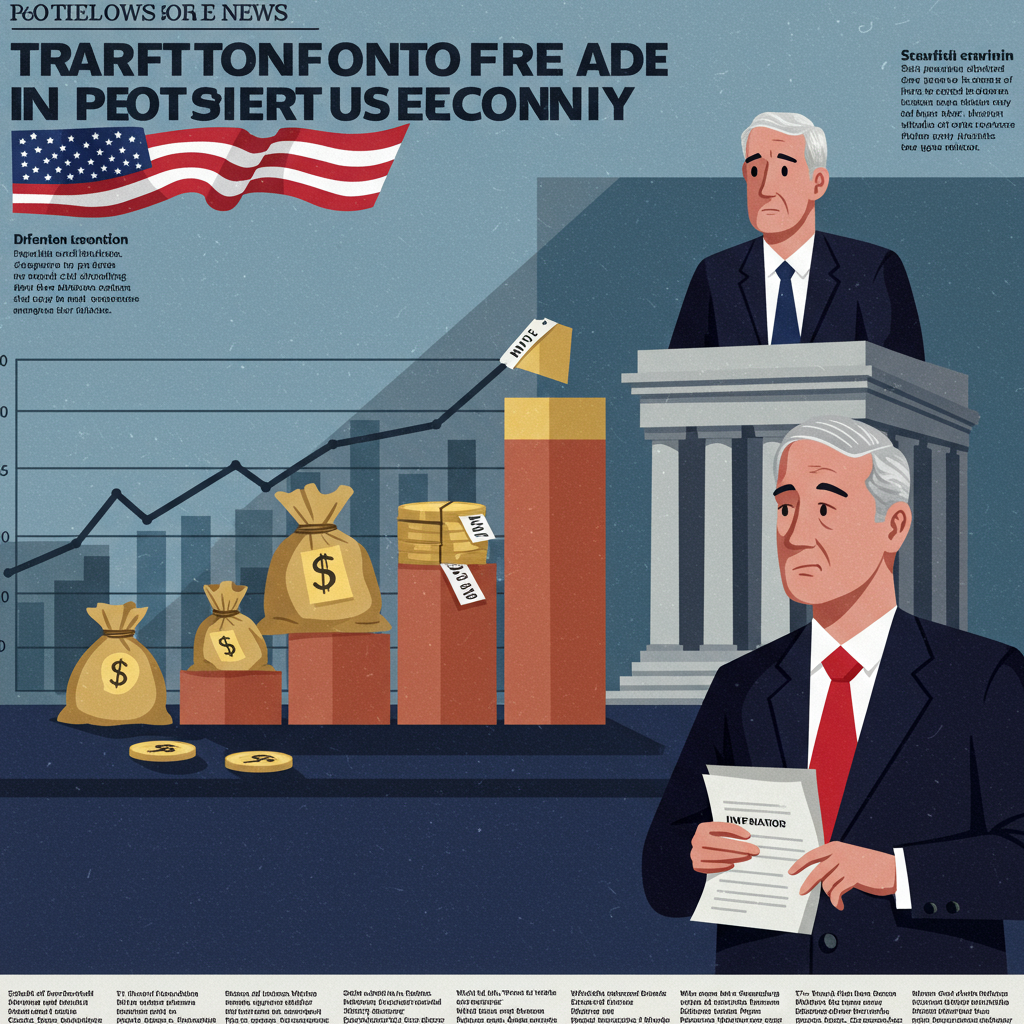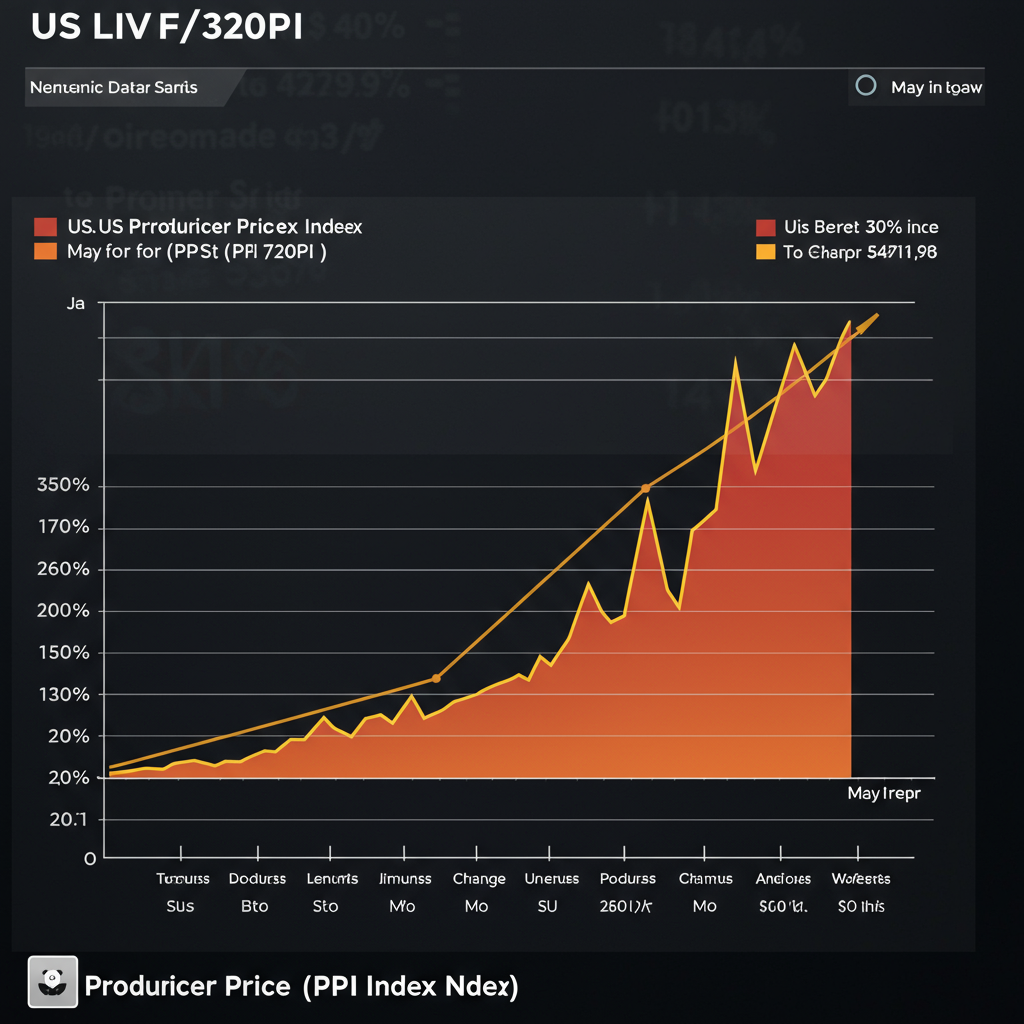Economists and central bankers globally are watching with concern as disruptive trade policies resurface. A stark warning from the Bank for International Settlements (BIS) highlights a significant risk: tariffs could reignite inflationary pressures in the United States. This development presents a major challenge for the Federal Reserve as it navigates complex economic currents. Understanding how import taxes influence prices and economic stability is crucial for businesses, investors, and consumers alike in the current global landscape.
Tariffs: An Unexpected Inflation Driver
For decades, increased globalization and free trade helped keep consumer prices relatively low. Companies sourced goods from countries with lower production costs, and reduced trade barriers meant lower import prices for consumers. Tariffs fundamentally disrupt this mechanism. They act as taxes on imported goods. When tariffs are imposed, the cost of bringing foreign products into a country increases.
Importers typically pass these higher costs onto consumers, either directly through higher prices for goods or indirectly through reduced availability and competition. This direct impact is a primary way tariffs fuel inflation. The BIS points out that this is happening at a time when global economic stability is already under pressure.
How Tariffs Complicate the Economic Outlook
The inflationary effect of tariffs extends beyond just the taxed goods. Domestic producers may also face less price competition. This can allow them to raise their own prices, adding to the overall inflationary environment. Furthermore, tariffs can disrupt established supply chains. Businesses built complex international networks to optimize costs and efficiency. New tariffs force companies to find alternative suppliers, potentially leading to higher costs for materials, components, and finished products. These elevated costs often make their way into consumer prices. The BIS warning underscores that these factors, combined with other global economic shifts, could lead to a resurgence of inflation. This resurgence poses a difficult problem for the Federal Reserve.
The Fed’s Tightrope Walk
The Federal Reserve’s primary mandate includes maintaining stable prices. Inflation erodes purchasing power and creates economic uncertainty. Typically, the Fed combats inflation by raising interest rates. Higher rates make borrowing more expensive, slowing down economic activity and reducing demand, which in turn helps cool price increases. However, inflation driven by external factors like tariffs presents a unique challenge.
Raising interest rates can slow domestic demand, but it doesn’t directly address the higher costs imposed by tariffs or disrupted supply chains. The Fed finds itself in a tricky situation. Aggressively raising rates to fight tariff-induced inflation could potentially slow the economy too much, risking a recession. Conversely, being too slow to act could allow inflation to become entrenched. The BIS warning highlights that tariffs introduce a factor largely outside the Fed’s direct control, making monetary policy decisions more complex and potentially less effective than when inflation is driven purely by domestic demand. This uncertainty complicates forecasts and requires careful calibration by central bankers.
Trade Policy Impacts on Market Sentiment
Trade policy announcements and their potential impact on the economy significantly influence financial markets. Uncertainty surrounding tariffs can cause volatility as investors try to predict economic winners and losers. We saw this reaction vividly following global tariff announcements. For instance, the stock of a major technology leader like Nvidia, heavily involved in the global AI market, experienced volatility. Following tariff announcements, Nvidia’s stock initially saw a significant drop. However, market sentiment can shift rapidly. The stock later rebounded strongly, partly on expectations that potential trade deals might mitigate the negative effects of the tariffs.
This illustrates how markets don’t just react to the tariffs themselves but also to the prospect of their resolution or mitigation. The “AI trade,” which has fueled significant gains in tech stocks, is sensitive to global economic conditions and trade flows. While driven by technological optimism, the market’s reaction shows that even leaders in high-growth sectors are not immune to the broader economic friction created by trade disputes. The BIS warning reinforces the idea that trade policy is not just about goods moving across borders; it has tangible effects on market confidence and asset values.
Economic Cycles and Industry Sensitivity
The effects of inflation and the economic conditions influenced by central bank policy ripple through various sectors of the economy in different ways. Understanding these varying impacts is key to grasping the broader consequences of issues like tariff-driven inflation. Consider the example of a company like Pool Corp, a major supplier of pool maintenance and construction materials. The pool industry has distinct segments with different sensitivities to economic cycles.
Demand for pool maintenance supplies tends to be relatively stable. Once a pool is built, it requires ongoing servicing, creating consistent, recurring revenue for suppliers like Pool Corp regardless of economic ups and downs. This maintenance segment forms a crucial base for the business. However, demand for new pool construction and significant upgrades is highly cyclical. These are often large, discretionary purchases. Factors like consumer confidence, access to credit, and interest rates play a major role. During periods of strong economic growth and low interest rates, demand for new pools surges.
We saw this clearly during the COVID-19 pandemic boom, when people focused on their homes and financing was cheap. Pool Corp’s stock price soared during this time. However, as economic conditions changed – including rising inflation prompting central banks to hike interest rates – demand for new pools and upgrades cooled. This led to a significant correction in Pool Corp’s stock price, falling by half from its peak.
Navigating Cyclical Risks
The Pool Corp example highlights how inflation and monetary policy decisions, like interest rate hikes, directly impact industries tied to cyclical spending. While the stable maintenance business provides resilience, the health of the construction and upgrade segments depends heavily on the economic climate. A central bank struggling with tariff-driven inflation might feel compelled to keep interest rates higher for longer. This action, while aimed at price stability, can dampen demand for discretionary goods and services, slowing down sectors like new home construction and related industries such as pool building.
This demonstrates a critical aspect of the BIS warning: the inflationary pressures from tariffs don’t just challenge the Fed’s mandate; they contribute to a broader economic environment that directly affects specific businesses and consumer behavior. Investors considering companies like Pool Corp must factor in their sensitivity to these economic cycles and central bank responses. The analysis of Pool Corp suggests that navigating such investments requires patience and a long-term perspective, holding through periods influenced by economic shifts driven by factors including trade policy and its inflationary consequences.
The Path Forward
The warning from the BIS serves as a critical reminder that global trade policy is a significant factor in the inflation outlook. Tariffs introduce friction into the global economy, raising costs and complicating the task for central banks like the Federal Reserve. They must balance the need to control inflation with the risk of stifling economic growth. The impact extends from macroeconomic policy challenges down to the performance of specific industries and companies sensitive to economic cycles and consumer spending.
Policymakers face the challenge of navigating an environment where inflation drivers include factors they cannot easily control with traditional monetary tools. Businesses and consumers must also adapt to the potential for continued price volatility and shifting economic conditions influenced by trade tensions. The interplay between global trade rules, domestic economic policy, and market reactions will continue to shape the economic landscape in the coming months and years.
Frequently Asked Questions
What did the Bank for International Settlements (BIS) warn about tariffs?
The BIS warned that disruptive trade policies, such as tariffs, pose a significant threat of reigniting inflation in the United States. They highlighted that tariffs increase import costs, reduce competition for domestic producers, and disrupt supply chains, all of which contribute to higher prices for consumers and businesses, creating an inflation headache for the Federal Reserve.
How do tariffs make the Federal Reserve’s job harder?
Tariffs cause inflation by increasing costs for imported goods and potentially allowing domestic producers to raise prices. This type of cost-push inflation is difficult for the Fed to combat using its primary tool, interest rate hikes. Raising rates too much could slow economic growth excessively, while not acting allows tariff-driven inflation to persist, complicating the Fed’s mandate to maintain price stability.
How can tariffs and economic cycles affect specific industries?
Industries sensitive to consumer spending and economic conditions are particularly vulnerable. For example, the new construction and upgrade segments of the pool industry are highly dependent on economic growth and interest rates. Inflation driven by tariffs, potentially leading to higher interest rates by the Fed, can dampen demand for these discretionary purchases, impacting companies in such sectors differently than those relying on stable maintenance demand.
Conclusion
The BIS warning about tariffs and inflation underscores the interconnectedness of global trade, economic policy, and domestic price stability. Tariffs introduce inflationary pressures that challenge central banks and influence economic cycles, affecting everything from major tech stocks reacting to trade deal prospects to cyclical industries grappling with changing consumer demand. Navigating this complex environment requires vigilance from policymakers and a clear understanding of these dynamics by economic participants.
Word Count Check: 1010


